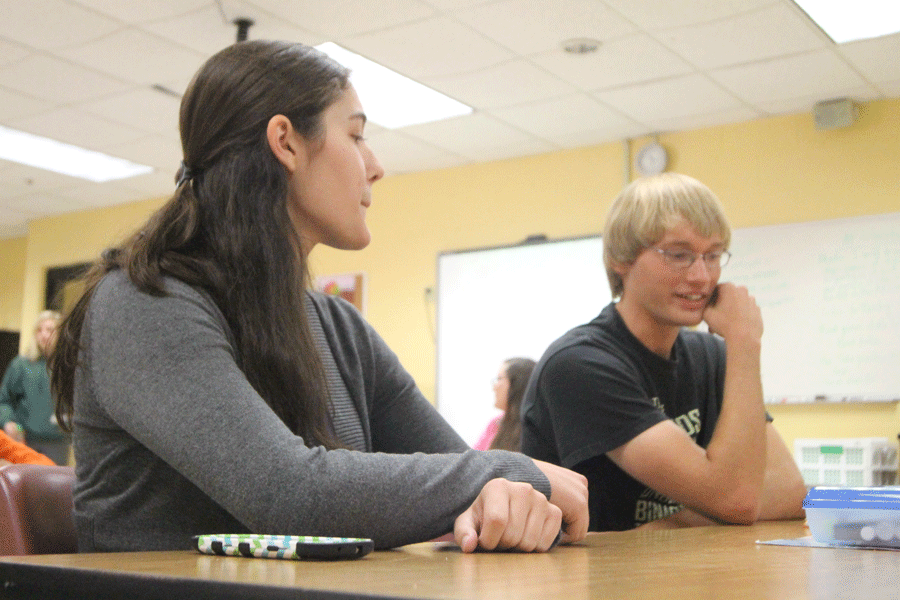Cooperative Learning Engages Students, Enhances Education
Published: November 6, 2015
In Shelly Parks’ fifth hour AP Literature class, students buzz with discussion in clusters of four – some intensely debating the theme of a poem, others quietly agreeing on a title. As they work together, Parks sits in the back of class at her computer, occasionally piping up to remind students of the time limits on their discussions.
“I think [cooperative learning] has lots of benefits,” associate principal Katie Greer said. “I think that students talking about the material stimulates more ideas as opposed to a teacher just talking at a class.”
Bringing cooperative learning, also referred to as Kagan, into classes introduced ways to get students to work together and be productive. This new approach was called for by a number of teachers in a survey released by the professional development committee. Certain teachers, like Parks, have rearranged their students’ desks into a Kagan structure that aims to promote teamwork that benefits all students in the class.
“We do so much with teams that you have to be strategic about it,” Parks said. “If I’m not doing that, it’s not that we’re never going to do group work, but I’m going to say, like, my four closest kids, turn your desks toward each other, and it’s not systematic.”
Teachers who implement cooperative learning also tend to lecture less than those who use classic methods, and emphasize Kagan activities such as Quiz-Quiz-Trade, RallyCoach, and RoundRobin discussions, which facilitate interaction between students.
“In most circumstances, it makes classes easier,” junior Amy Wedewer said. “Whenever group work is assigned, we divide it up pretty evenly. But, and I mostly speak on the behalf of honors students, kids typically like to work on their own. With Kagan structure, kids that are high level may get pulled down.”
Teachers and students alike hold mixed opinions on cooperative learning strategies. Some students feel that their ability to work effectively has been hindered. Others question how these learning strategies can possibly cognitively engage all students. However, both Parks and Greer report positive feedback from fellow staff members.
“I think that kids are held way more accountable and that they are learning way more in my classes than they have in the past,” Parks said. “We’re implementing structures to ensure that, essentially, 100 percent of students are accountable 100 percent of the time.”






![FHN Holds Prom at Old Hickory Country Club [Photo Gallery]](https://FHNtoday.com/wp-content/uploads/2024/04/Brewer_stopmotion-9-300x200.jpg)


![FHN Students Watch the Solar Eclipse [Photo Gallery]](https://FHNtoday.com/wp-content/uploads/2024/04/4.8.24-solar-eclipse_-300x200.jpg)
